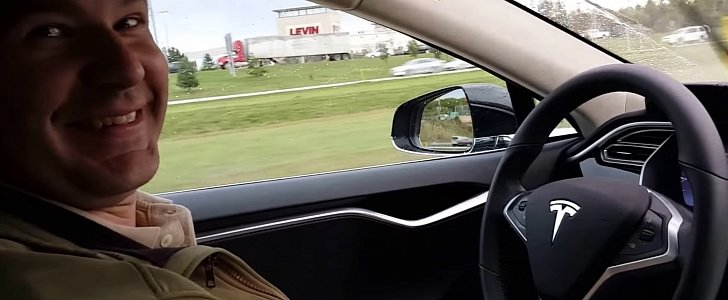There's been a lot of talk over autonomous or self-driving cars (not the same thing, according to Uber) this year, and the actions of one particular carmaker have also helped.
Yes, we're talking about Tesla, the only company that dared to present its set of driver's aid systems as offering "partial autonomy," even though it then tried to say that wasn't what it meant. The moment that prompted this change in discourse was the first recorded fatality of a person using Tesla's Autopilot.
The case of Joshua Brown has become notorious, and so has the Autopilot. The debate has raged over whether the system is safe or not, but nobody managed to reach a conclusion so things kept going as usual - luckily, without any other victims.
Tesla's main defense was that it never presented Autopilot as turning the car into an autonomous one and that it has made it very clear that the driver must be ready to step in and take control of the vehicle at any time. The Palo Alto company is right on both accounts, even though a lot of people - myself included - argued that the "Autopilot" name is somewhat misleading.
A Stanford University study published on December 6 reveals that anything but full autonomy in cars has no chance of working. The research conducted by the Stanford University Dynamic Design Lab focused on the so-called "handoff moment."
They showed that no matter how connect the driver remained during the time the car's AI took control, they needed a few seconds to reach peak acuity. But that's something we already knew. What the study manages to dissect even further is why exactly that is.
The researches have noticed that the biggest issue with the handoff - the moment the car's systems return the control of the vehicle to its human driver - arose when there was a change in speed compared to when the driver last operated the car himself.
That's because a vehicle needs different steering inputs depending on the speed it's traveling at - something we all know and learn through experience over time. But when the handoff occurs, we still need a few moments to recalibrate, no matter how experienced drivers we are.
Simply knowing the vehicle is traveling at a faster pace does not help since this isn't so much a cognitive issue, but an actuating one. It's also something that can not be avoided by Level 3 autonomous cars, and will only be overcome once we hit Level 4 or 5.
The case of Joshua Brown has become notorious, and so has the Autopilot. The debate has raged over whether the system is safe or not, but nobody managed to reach a conclusion so things kept going as usual - luckily, without any other victims.
Tesla's main defense was that it never presented Autopilot as turning the car into an autonomous one and that it has made it very clear that the driver must be ready to step in and take control of the vehicle at any time. The Palo Alto company is right on both accounts, even though a lot of people - myself included - argued that the "Autopilot" name is somewhat misleading.
A Stanford University study published on December 6 reveals that anything but full autonomy in cars has no chance of working. The research conducted by the Stanford University Dynamic Design Lab focused on the so-called "handoff moment."
They showed that no matter how connect the driver remained during the time the car's AI took control, they needed a few seconds to reach peak acuity. But that's something we already knew. What the study manages to dissect even further is why exactly that is.
The researches have noticed that the biggest issue with the handoff - the moment the car's systems return the control of the vehicle to its human driver - arose when there was a change in speed compared to when the driver last operated the car himself.
That's because a vehicle needs different steering inputs depending on the speed it's traveling at - something we all know and learn through experience over time. But when the handoff occurs, we still need a few moments to recalibrate, no matter how experienced drivers we are.
Simply knowing the vehicle is traveling at a faster pace does not help since this isn't so much a cognitive issue, but an actuating one. It's also something that can not be avoided by Level 3 autonomous cars, and will only be overcome once we hit Level 4 or 5.

